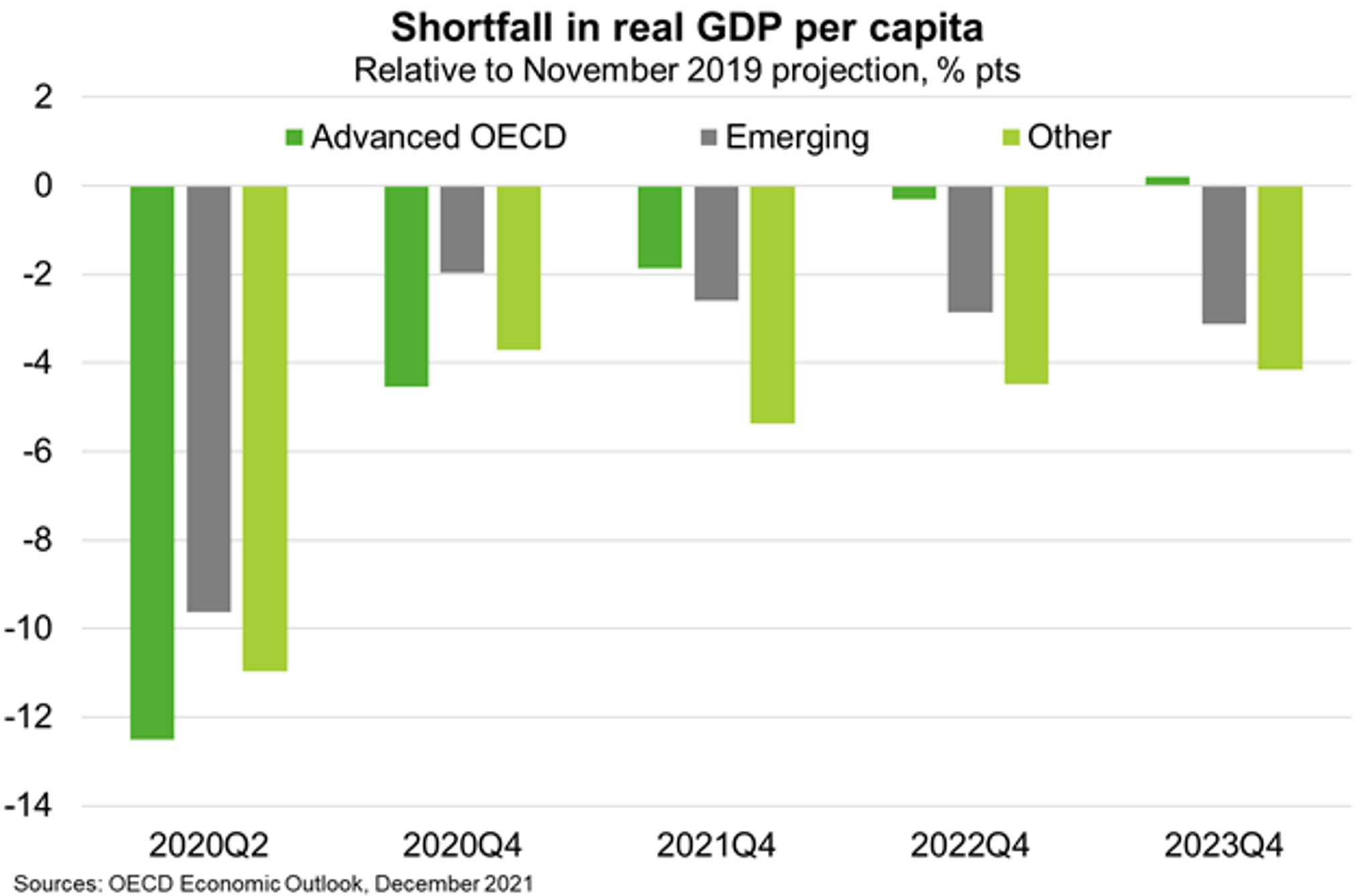2022—Global economic recovery to continue at a slower pace
Global economic growth is expected to moderate to 4.5% in 2022 and 3.2% in 2023 (from 5.6% in 2021) as base effects and policy tightens, but the rebound in services and investment becomes more entrenched. This baseline outlook relies on three key assumptions. First, that the Omicron variant does not significantly decrease immunity against hospitalisations and the delivery of vaccines and therapies to lower income countries improves. Combined with more targeted and effective precautions, this allows a full reversal of cross-border activity restrictions by end-2022. Second, that demand patterns between goods and services normalise, production and transport capacity expand, and labour supply recovers. This eases bottlenecks and shortages and sees inflation moderate to pre-pandemic levels across most economies next year. Third, that policymakers avoid providing stimulus for too long or removing it too quickly.
Economic gains will become increasingly uneven. Almost all advanced economies and a large fraction of emerging markets are expected to surpass their pre-pandemic levels of output next year. But while output in advanced economies is expected to converge on the path expected prior to the COVID-19 pandemic, output seems likely to fall short of pre-pandemic expectations in many emerging markets (Chart). Lower income countries in particular will suffer sizeable long term economic scarring. This primarily reflects lopsided macroeconomic policy support and vaccination rates. Booster shots administered in high income countries are now more than double the total number of doses administered in low income countries. Weak confidence and uncertainty will also curtail tourism and business travel until at least 2023, particularly to countries where vaccination rates lag, despite the progressive easing of border restrictions.

